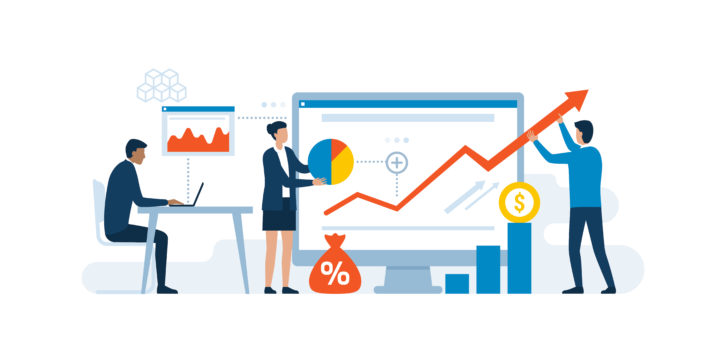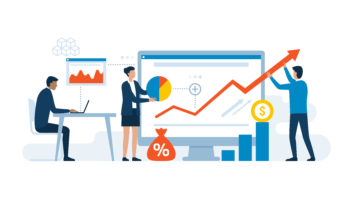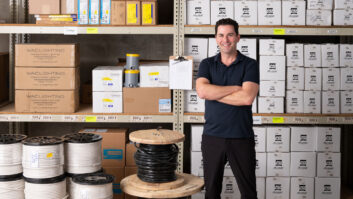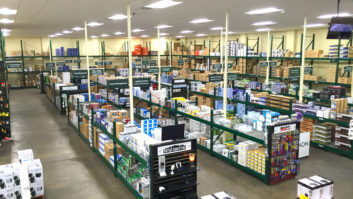[EDITOR’S NOTE: VITAL is in its second year of monthly CI Business Mastery Classes where it addresses important CI business topics via webinars. Each class is supported by an industry brand. VITAL has agreed to share some of the information from these classes in a monthly column of highlights from its most recent webinar. The topics are the same as the previous year’s classes, but the content is refreshed. This CI Business Mastery Class was on overhead, and it was supported by Masimo/Sound United.]

Today we are going to discuss what is considered overhead, what parts of it can we control, and whether or not it can put companies out of business.
In the VITAL Method, we have three categories of overhead, which are also called major operating costs (MOC):
- Admin Expenses tend to be fixed regardless of how much work is being done or how much revenue is generated. This is what people refer to as overhead in a very general way.
- Occupancy Expenses also tend to be fairly fixed; however, we can carve them out and look at them separately as they relate to the space we occupy so that we gain some insights into how we’re leveraging those expenses as we grow the company.
- Sales Expenses tend to rise and fall with revenue — or they tend to be in place to drive additional revenue. These tend to be more variable expenses.
The overall benchmark for major operating costs is 10 to 18 percent of revenue, which can be very market-dependent. The goal is to manage these expenses so that they don’t grow at the same rate as revenue. The gross margin also needs to be strong enough to cover these expenses and produce a healthy bottom line.
Managing Expenses
Sales Expenses are the expenses that are associated with anticipated revenue growth, or rise and fall as a result of revenue. Sales Expenses include automobile expenses, credit card processing fees, incoming freight, meals and entertainment, marketing, small tools, and sponsorships or donations.
Occupancy Expenses include rent, utilities, security, janitorial, common area maintenance fees, and building repairs. We’re often asked why we carve this out and what is the value in grouping these expenses. In some cases, it is the largest of your fixed expenses, and there’s also keen attention paid to these expenses during any sale or buyout transaction.
We come across many dealers who own their building, which is fantastic, and some of them own their building under the name of the company, and thus they have very few occupancy expenses as their mortgage is really a balance sheet item. So, when you buy the building under the company name, the mortgage is what pays that that expense — it’s not on your P&L.
We recommend that if you’re going to buy your business property, own it under a different LLC and rent that property to the business at a market rate. There’re several positive reasons to do that, including having a P&L that shows a more realistic profitability picture. You can see on your P&L that you’re paying rent and anybody who takes over that business would have to pay rent. This also better aligns your operating profit with benchmarks across the industry.
This method of owning real estate outside of the business can provide better asset protection and provide a separate valuation for any future real estate or business sale. When you separate those assets, it makes it so much easier to transact them in the future or to perform any kind of financing transactions for either entity.
Admin Expenses are any other recurring expenses that are not sales or occupancy and include outside services such as legal or accounting; bank service charges; computer and cloud services; consulting fees; business insurances; office supplies; business licenses; memberships and subscriptions; and business travel.
Breaking up your expenses into these top-level categories makes it easy to manage them. The goal is for these expenses to be contained as you grow. When expenses are rising at a slower rate than revenue or a slower rate than gross margin, you create real leverage in the business — there’s basically more left of every dollar that goes in.
Keeping Control
So, what can a business owner or manager control? All of them! Something we come across as a misconception over and over again is that you can somehow cost-cut your way to profitability. That’s true on the compensation side more than it is on the overhead side. Simple analysis will show that it’s incredibly difficult to cut your way into profitability because you end up starving the business of the things that it needs to produce value to the customers.
The best way to manage fixed expenses is to assess them as they’re incurred, being very diligent to manage added expenses as they come in. Profitability is leveraged when you’re able to increase the output of the company without a corresponding linear increase in fixed expenses.
As for variable expenses, those tend to rise and fall with revenue activity and can be managed as you agree to them. Get the best credit card rates that you can and manage the incoming freight from your vendors. Think about leveraging these expenses as much as possible. Reducing your cash outlay for some of these things can mean half a percent of revenue, which doesn’t sound like a lot, but in a $3 million business, half a percent is $15 grand in a year’s time. The larger your revenue, the greater the impact you can have in controlling these variable expenses.
If your Admin and Occupancy Expenses are well-managed, but your Sales Expenses are all over the board, it is worth looking at. We expect those expenses to rise and fall, but it’s not like an open checkbook. You need to make sure you’re getting an ROI on all the business development and marketing investments. Again, it’s tough to cut your way to profitability later, so you should review your expenses every six months.
Can You Overhead Yourself Out of Business?
We have yet to see anyone go out of business due to overspending on fixed or variable costs. What we have seen are businesses going under due to these four reasons:
- Poor Margins: This is the most controllable situation you have in your business, as you set your prices, yet this continues to be the biggest miss for dealers across the country.
- Oversized Payroll: Many of the dealers we’ve spoken to who’ve gone out of business were simply hesitant to make the difficult decisions needed around personnel. You may need to right-size your business, and the faster you do it, the better off you’ll be.
- Poor Cash and Collections Management: This truly determines the overall solvency of a business. All too often we see very busy and large companies fall due to poor cash flow management.
- Poor Workmanship/Customer Service: Simply not doing great work or having to spend money getting the next job because your referral engine isn’t working, then dealing with these ebbs and flows of job timing, can easily lead to a business going under.
And though it probably won’t cause your business to fail, it is still important to properly manage your overhead, for which VITAL recommends you simplify how you categorize expenses; review the expenses on a monthly basis; always determine the ROI; and implement simple metrics to track changes as you grow.
For more information about the CI Business Mastery Classes and the other services VITAL provides, visit http://growwithVITAL.com.







